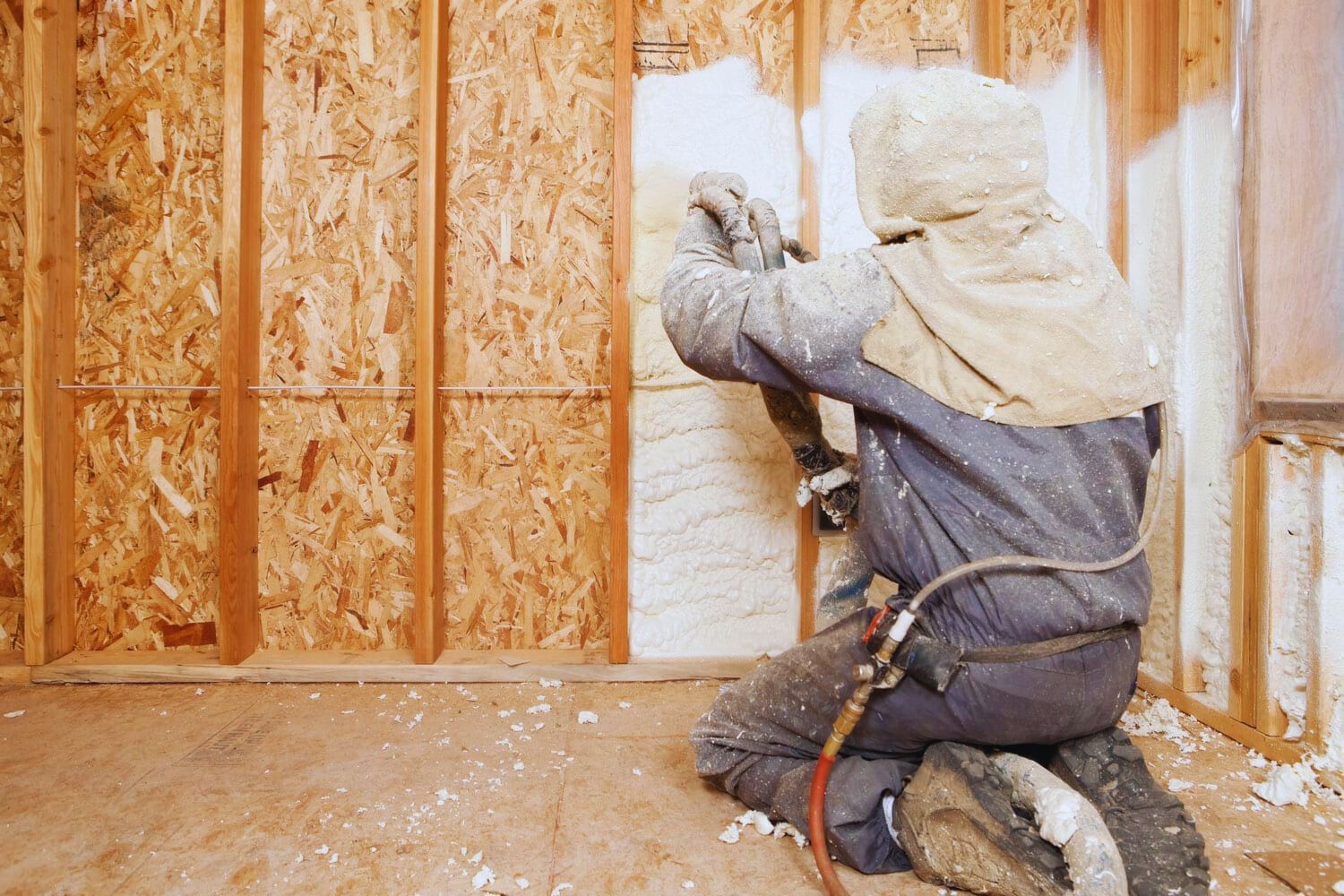Closed-Cell vs.Open-Cell Spray Foam for Crawlspaces: Expert Guide
Spray foam insulation has become a popular choice for homeowners looking to improve their home's energy efficiency, especially in crawlspaces. At Georgetown Premier Insulation, we offer both closed-cell and open-cell spray foam options for crawlspace insulation. Each type has unique properties that make it suitable for different situations.
Choosing between closed-cell and open-cell spray foam for your crawlspace depends on factors like moisture levels, insulation requirements, and budget. Closed-cell foam provides a higher R-value per inch and acts as a vapor barrier, making it ideal for areas prone to moisture. Open-cell foam, on the other hand, is more affordable and allows for better soundproofing.
We understand that selecting the right insulation can be challenging. That's why our team at Georgetown Premier Insulation is here to guide you through the decision-making process. We'll assess your crawlspace's specific needs and recommend the most suitable spray foam solution for your home.
Key Takeaways
- Spray foam insulation offers superior energy efficiency for crawlspaces
- Closed-cell foam provides better moisture resistance and higher R-value
- Open-cell foam is more cost-effective and offers improved sound dampening
Understanding Spray Foam Insulation
Spray foam insulation is a modern solution for enhancing energy efficiency in crawlspaces. It's applied as a liquid that quickly expands and hardens, creating a seamless barrier.
There are two main types of spray foam: open-cell and closed-cell. Both offer excellent insulation properties, but they have distinct characteristics.
Open-cell foam is lighter and more flexible. It expands significantly during application, filling gaps and cracks effectively. This type of foam allows some moisture vapor to pass through.
Closed-cell foam is denser and more rigid. It provides a higher R-value per inch, meaning better thermal resistance. It also acts as an effective moisture and vapor barrier.
R-value is a crucial factor in insulation. It measures thermal resistance - the higher the R-value, the better the insulation performance. Closed-cell foam typically offers a higher R-value than open-cell.
Both types of spray foam create an air barrier, which is essential for preventing drafts and maintaining consistent temperatures. This air-sealing property contributes significantly to energy efficiency.
When choosing between open-cell and closed-cell foam for crawlspaces, we consider factors like moisture levels, required R-value, and budget. Each type has its strengths, and the best choice depends on specific project needs.
The Benefits of Open-Cell Spray Foam
Open-cell spray foam offers unique advantages for crawlspace insulation. This versatile material provides excellent soundproofing, moisture control, and cost-effectiveness.
Soundproofing Capabilities
Open-cell spray foam excels at sound absorption. Its porous structure effectively traps sound waves, reducing noise transmission between floors and rooms.
We've found that this quality is particularly beneficial in crawlspaces, as it helps minimize the transfer of outdoor noises and mechanical system sounds into living areas above.
The foam's ability to fill gaps and cracks further enhances its soundproofing performance, creating a quieter home environment.
Moisture Control and Flexibility
Open-cell spray foam's flexibility makes it ideal for crawlspaces. It expands and contracts with temperature changes, maintaining a tight seal against air and moisture infiltration.
This foam allows water vapor to pass through, preventing moisture buildup in wall cavities. In crawlspaces, this property helps manage humidity levels and reduce the risk of mold growth.
The material's flexibility also accommodates slight structural movements without cracking or separating, ensuring long-lasting insulation performance.
Cost-Effective Solution for Crawlspaces
We often recommend open-cell spray foam as a budget-friendly option for crawlspace insulation. It typically costs less per square foot than closed-cell alternatives.
The foam's expansion properties allow it to cover large areas quickly, reducing installation time and labor costs. This efficiency is particularly valuable in crawlspaces with limited access.
Open-cell foam's lower density means more coverage per unit, further contributing to its cost-effectiveness. It provides excellent insulation value for the price, making it an attractive choice for homeowners looking to improve energy efficiency on a budget.
The Advantages of Closed-Cell Spray Foam
Closed-cell spray foam offers several key benefits for crawlspace insulation. Its unique properties make it an excellent choice for homeowners seeking superior performance and long-lasting protection.
Superior R-Value and Thermal Resistance
Closed-cell spray foam boasts an impressive R-value of 6-7 per inch, significantly higher than other insulation materials. This high thermal resistance allows for effective insulation even in limited spaces.
We've found that a 2-inch layer of closed-cell foam can provide the same insulating power as a much thicker layer of traditional materials. This efficiency is particularly valuable in crawlspaces where space is often at a premium.
The dense structure of closed-cell foam also maintains its R-value over time, ensuring consistent performance for years to come.
Strengthens Structural Integrity
One of the most unique advantages of closed-cell spray foam is its ability to enhance the structural strength of a building. When applied, it expands and hardens into a rigid foam that adheres strongly to surfaces.
This property can increase the racking strength of walls by up to 300%. In crawlspaces, this added structural support can be particularly beneficial, helping to reinforce floor joists and enhance overall building stability.
The rigidity of closed-cell foam also helps resist the settling and shifting that can occur in crawlspaces over time.
Effective Vapor and Air Barrier
Closed-cell spray foam acts as an excellent vapor and air barrier, crucial for maintaining a dry and healthy crawlspace environment. Its dense structure prevents moisture penetration, effectively sealing out dampness and humidity.
This barrier property is especially important in crawlspaces, which are often prone to moisture issues. By blocking water vapor, closed-cell foam helps prevent mold growth and wood rot.
The foam's air-sealing capabilities also contribute to improved energy efficiency by eliminating drafts and air leaks. This can lead to significant savings on heating and cooling costs for homeowners.
Evaluating the Differences
Closed-cell and open-cell spray foam insulation have distinct characteristics that impact their performance in crawlspaces. These differences affect sound dampening, energy efficiency, and moisture control.
Sound Dampening and Absorption
Open-cell spray foam excels at sound dampening due to its softer, more porous structure. It absorbs sound waves effectively, reducing noise transmission between floors and from outside sources. This can create a quieter living environment above the crawlspace.
Closed-cell foam, while still offering some sound reduction, is less effective in this area. Its denser structure reflects more sound waves rather than absorbing them. However, it can still contribute to overall noise reduction when used in crawlspace applications.
For homeowners prioritizing sound control, open-cell foam may be the preferred choice. It's particularly useful in homes with living spaces directly above crawlspaces.
Energy Savings and Air Sealing
Closed-cell spray foam provides superior air sealing and insulation properties. Its higher R-value per inch means better thermal resistance, leading to significant energy savings. This foam creates an airtight barrier, preventing drafts and air leakage.
Open-cell foam also offers good air sealing but with a lower R-value. It expands more during application, filling gaps and cracks effectively. While it requires more thickness to achieve the same insulation value as closed-cell foam, it can still contribute to energy efficiency.
We recommend closed-cell foam for crawlspaces in extreme climates where maximum insulation is crucial. Open-cell foam can be suitable in milder regions or where budget constraints are a factor.
Moisture and Mold Growth Prevention
Closed-cell spray foam acts as an excellent moisture barrier. Its dense structure prevents water vapor transmission, making it ideal for crawlspaces in humid climates or areas prone to flooding. This foam type significantly reduces the risk of mold growth and water damage.
Open-cell foam is vapor-permeable and doesn't provide a moisture barrier. In crawlspaces, this can be a disadvantage, potentially allowing moisture to pass through and condense on cooler surfaces. However, its ability to dry out if it does get wet can be beneficial in some situations.
For most crawlspace applications, we suggest closed-cell foam due to its moisture-resistant properties. It offers better protection against humidity and water-related issues common in these areas.
Installation Process and Best Practices
We begin the installation process by thoroughly cleaning and preparing the crawlspace. This ensures optimal adhesion of the spray foam insulation. Our team then applies a protective covering to any surfaces not intended for insulation.
For closed-cell foam, we typically apply it in layers of 1-2 inches, allowing each layer to cure before adding the next. Open-cell foam is usually applied in a single, thicker layer. We use specialized equipment to mix and spray the foam components on-site.
Proper ventilation is crucial during installation to maintain good indoor air quality. We use fans and temporary barriers to control airflow and minimize off-gassing. Our technicians wear appropriate personal protective equipment throughout the process.
After application, we allow sufficient curing time before removing protective coverings. This can range from a few hours to a full day, depending on the specific product and environmental conditions.
Best practices we follow include:
- Careful moisture management in the crawlspace
- Ensuring proper substrate temperature
- Maintaining consistent spray techniques for even coverage
- Regular equipment maintenance and calibration
By adhering to these practices, we ensure a high-quality installation that maximizes the benefits of spray foam insulation in crawlspaces.
A Cost Comparison of Open-Cell and Closed-Cell Foam
When comparing open-cell and closed-cell spray foam insulation for crawlspaces, cost is an important factor to consider. We've found that closed-cell foam generally costs more than open-cell foam.
Open-cell spray foam typically ranges from $0.35 to $0.55 per board foot. Closed-cell foam, on the other hand, usually costs between $1.00 to $1.50 per board foot.
The price difference is due to several factors:
- Density: Closed-cell foam is denser, requiring more material
- R-value: Closed-cell foam offers a higher R-value per inch
- Installation: Closed-cell foam may require specialized equipment
It's important to note that while open-cell foam is less expensive upfront, it may require a thicker application to achieve the same R-value as closed-cell foam.
For crawlspaces, the minimum recommended thickness for open-cell foam is 3.5 inches. Closed-cell foam can achieve similar insulation levels with just 2 inches of thickness.
When budgeting for your crawlspace insulation project, consider these factors:
- Total square footage of the area
- Desired R-value
- Long-term energy savings
- Moisture control needs
We recommend getting quotes for both types of foam to compare the total project costs for your specific crawlspace.
Choosing the Right Insulation for Your Crawlspace
When it comes to insulating crawlspaces, we recommend considering both closed-cell and open-cell spray foam options. Each type has distinct characteristics that may suit different needs.
Closed-cell spray foam offers a higher R-value per inch, typically between R-6 and R-7. This makes it an excellent choice for areas with limited space. It also acts as a moisture barrier, which is crucial for crawlspaces prone to dampness.
Open-cell spray foam, while having a lower R-value of about R-3.6 to R-4.2 per inch, excels in sound dampening. It's often more budget-friendly and can be a good option in drier climates.
For crawlspaces with exterior walls, closed-cell foam provides superior air sealing and structural support. It adheres well to surfaces, adding rigidity to the overall structure.
We always consider the specific requirements of each crawlspace:
- Climate conditions
- Moisture levels
- Space constraints
- Budget considerations
In some cases, a combination of insulation types might be the best solution. For example, using closed-cell foam on exterior walls and open-cell in less critical areas.
Proper insulation can significantly improve energy efficiency and help maintain a comfortable temperature throughout your home. We're here to help you make the best choice for your specific crawlspace needs.
You might also like
GPI Articles


Request Service Today!
Thank you for contacting us.
We will get back to you as soon as possible.
Oops, there was an error sending your message.
Please try again later.
Revolutionize your living experience with our top-tier spray foam insulation service, designed to elevate your home's energy efficiency and comfort levels to new heights. Our dedicated team of professionals brings years of expertise to every project, ensuring precise installation of high-quality spray foam insulation throughout your entire home. Bid farewell to pesky drafts, soaring energy bills, and uneven indoor temperatures as our meticulously applied insulation seals every nook and cranny, creating a cozy and consistent climate year-round. Not only does our insulation solution enhance your comfort, but it also promotes environmental sustainability by reducing energy waste and lowering your carbon footprint. Rest easy knowing that our comprehensive insulation package is tailored to suit your home's specific needs, providing lasting performance and peace of mind for you and your family. Experience the transformative power of superior insulation with our trusted service. Interested in knowing more? Check out our Blog!






